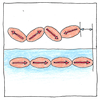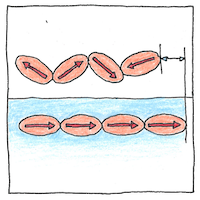James Prescott Joule
electromagnetism

|
Magnetostriction
James Prescott Joule, who discovered the mechanical equivalent of heat and for whom the unit of energy, the Joule, is named, discovered that magnetization of iron twists its magnetic domains to change its dimensions.
Magnetomechanical effects
Stretching an iron rod produces the Villari effect—generates a magnetic field. Twisting an iron rod conducting an electric current produces the Matteucci effect—generates a magnetic field. A magnetic field across a conducting iron rod produces the Wiedemann effect—twists the rod. A magnetic field along a bent iron rod produces the Guillemin effect—straightens the rod.
Microstrains
Familiarity breeds microstrains; microstrains breed contempt. Eventually, it may be, microfractures rupture, and microslippages avalanche. Energy harvesting may eventually capitalize microstrains. Boiling too much water may eventually rust my microwave screen. Small annoyances may eventually fracture my patience.



Different magnetostrictive materials shrink by different amounts in a magnetic field, depending on the temperature and strength of the field. At room temperature, colbalt can shrink six thousands of a percent. Terfenol-D, a terbium-iron-dysprosium alloy, can shrink two tenths of a percent. Magnetostriction is measured in microstrains, which are parts per million.
See also in The book of science:
Readings in wikipedia: